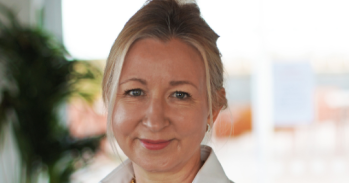
Cambridge researchers have identified a group of traders consistently able to outperform the market, even during the credit crisis.
Cambridge researchers have identified a group of traders consistently able to outperform the market, even during the credit crisis.
Our study suggests a novel way of remunerating traders.
Dr John Coates
The study by John Coates and Lionel Page of the University of Cambridge offers a rare glimpse into how biology, experience and compensation schemes work together to make a profitable and - crucially - a prudent risk taker.
The study builds on previous research by Coates and colleagues that found higher levels of testosterone, in both the male foetus and the adult, predicted higher profitability among so-called 'high frequency' traders. It also casts doubt on the Efficient Market Hypothesis.
In the current study Coates and Page examine a more subtle measure of performance than profits - a trader's Sharpe Ratio. This is the ratio between how much money a trader makes and the amount of risk taken in making that money.
According to Dr Coates, who previously ran a trading desk on Wall Street: "A trader making $100million would normally be considered a star, but not if the trader could just as easily have lost $500million. A trader's Sharpe Ratio is a better measure of skill than profits alone because it would expose this trader as reckless."
The authors calculated the Sharpe Ratios for 53 male high-frequency traders in the City of London. These are traders who buy and sell futures but hold their positions for only seconds or minutes. They then compared the traders' ratios for the period 2005-07 with the Sharpe Ratio of the Dax, the German stock market and the traders' benchmark index.
They found that experienced traders in the study group (those trading for more than two years) had an average Sharpe of 1.02, significantly higher than the Dax, which averaged 0.53 during the same period. Importantly, in a follow-up they ascertained that the experienced traders performed on average even better during 2008, a year in which many traders at other banks and hedge funds lost more money than they had made in the previous five years.
The out-performance of these traders is unlikely to be due to chance, say Coates and Page, because they also found that the Sharpe Ratios of these traders increased significantly the longer they had traded, indicating that they were learning to be more prudent risk takers.
The study casts doubt on the Efficient Market Hypothesis, which has over the past 20 years encouraged a laissez-faire attitude to the financial markets. According to this hypothesis the markets are random, so no one can consistently achieve a higher Sharpe Ratio than the broad market, and no one can improve at trading, just as no one can improve at flipping coins. The experienced traders in this study, however, were outperforming the market and were learning, implying that markets are not in fact efficient.
The study also sheds new light on Coates' previous finding that a surrogate measure of pre-natal testosterone exposure, the second to fourth finger length ratio (2D:4D), predicts a high frequency trader's lifetime profitability. Coates and his colleagues could not say at that time if testosterone was affecting the amount of risk taken by the traders or the amount of money they made per unit of risk, i.e. their skill. They now find that 2D:4D does not predict Sharpe Ratios. Coates, now a research fellow in neuroscience and finance, says: "It seems testosterone affects the amount of risk traders take but not their skill."
The study has practical implications for banks and hedge funds which need to know, when allocating capital and bonuses, whether a trader's performance is due to skill or luck.
"Our study suggests a novel way of remunerating traders. Banks could use an improving Sharpe Ratio over time as a measure which reliably indicates a trader has developed a skill worth paying for," says Coates.
By paying bonuses on profits alone, however, the banks and hedge funds may have encouraged traders to maximize their risk, rather than Sharpe Ratios. "The traders in our study, on the other hand, received no bonus, only profit shares. They had therefore a strong incentive to lower, not raise, the variance of their profits," added Coates.
The study shows how biology and management can work together. Traders are risk takers so need a high tolerance for risk, a trait predicted by a measure of prenatal androgen exposure. "However, this trait, like height or speed in sports, may count for little without proper training and the right incentives. In trading, as in sports, biology needs the guiding hand of experience," he concluded.
This work is licensed under a Creative Commons Licence. If you use this content on your site please link back to this page.





